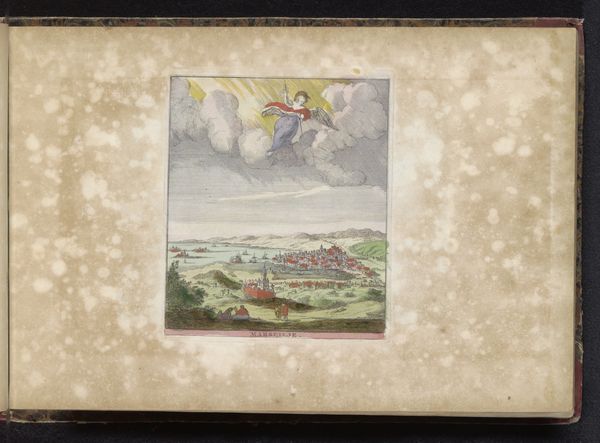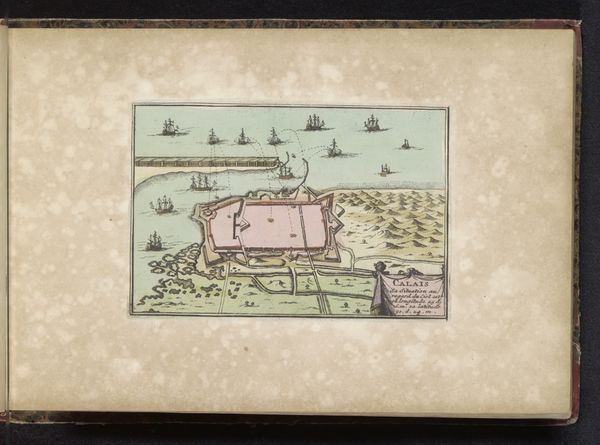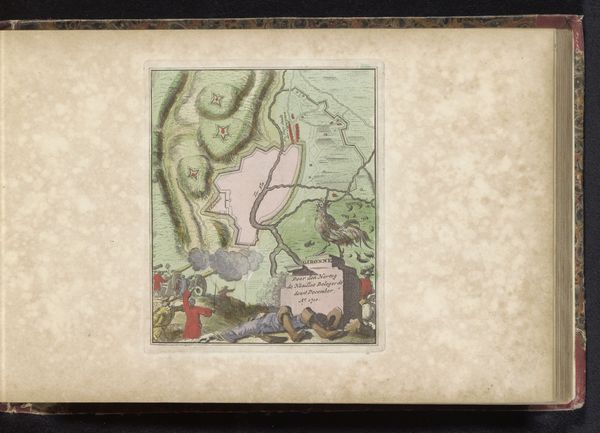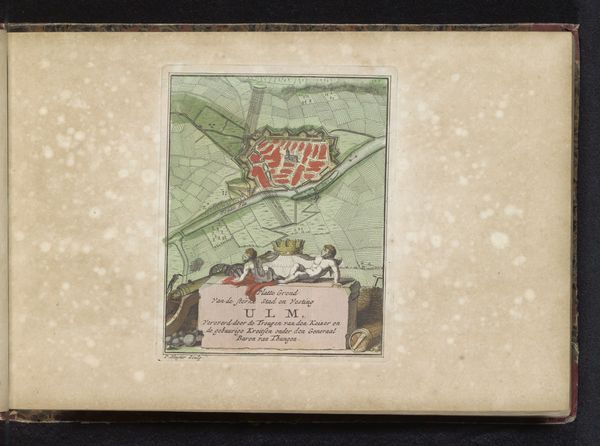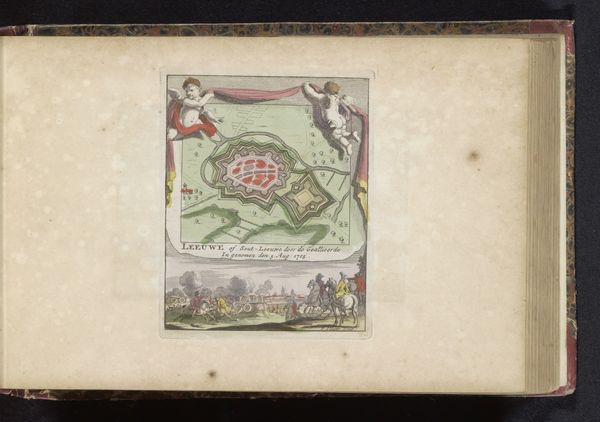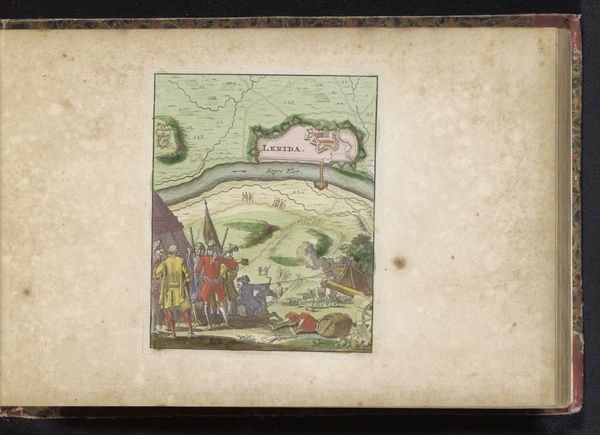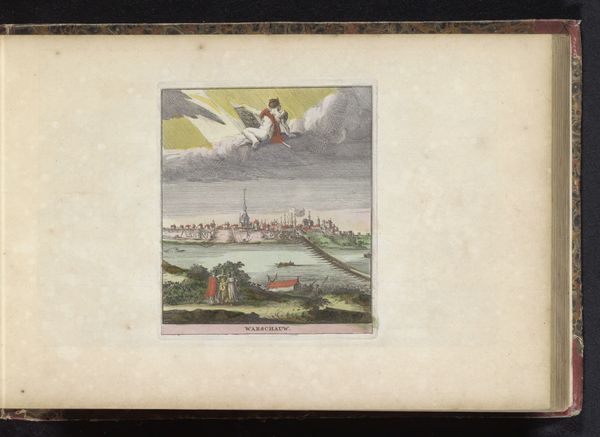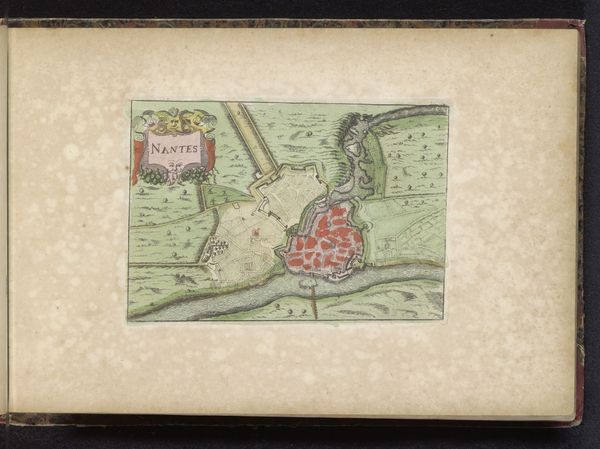
drawing, print, etching, paper, ink, engraving
#
drawing
#
baroque
#
dutch-golden-age
# print
#
etching
#
landscape
#
paper
#
ink
#
coloured pencil
#
cityscape
#
genre-painting
#
engraving
#
mixed media
Dimensions: height 145 mm, width 126 mm
Copyright: Rijks Museum: Open Domain
This is an anonymous view of San Sebastián made with engraving, a printmaking process that dates back to the 15th century. The process involves using a tool called a burin to carve lines directly into a metal plate, which is then inked and printed. The engraver would have needed considerable skill to create the fine lines and details we see here, from the buildings to the ships at sea. The evenness of the lines speaks to the hand of a professional. These lines define the forms and create a sense of depth, while the addition of color washes brings the scene to life. Engravings like this were often made for reproduction in books or as individual prints, allowing for the widespread dissemination of images and information. In that sense, they are closely tied to the rise of commerce and the growth of a visual culture. The labor involved in creating such a print, from the initial drawing to the final printing, reflects the economic realities of the time, but it is also a testament to the enduring power of the handmade image. By attending to these considerations, we can appreciate the full meaning of the artwork and challenge traditional distinctions between fine art and craft.
Comments
No comments
Be the first to comment and join the conversation on the ultimate creative platform.
